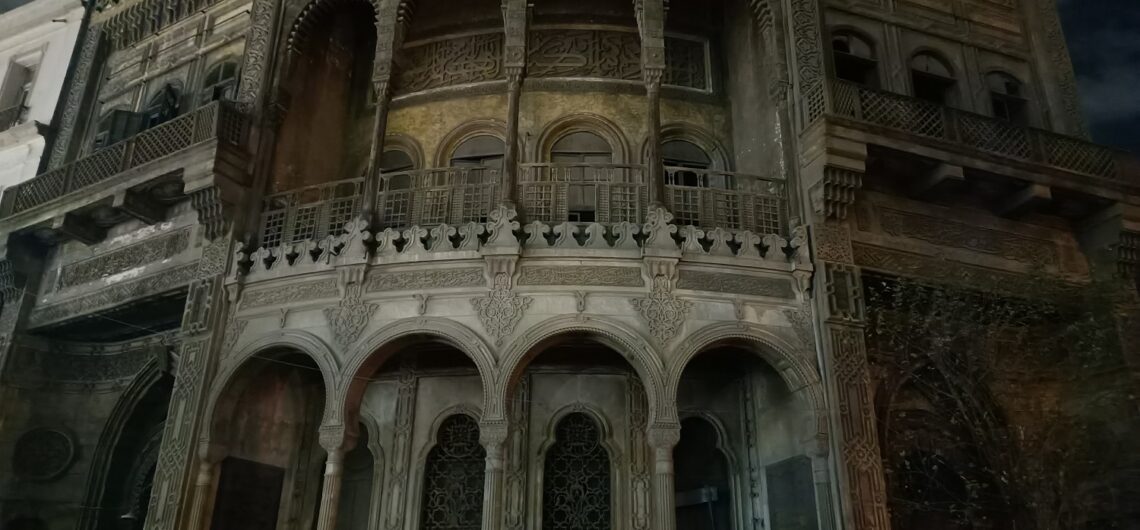Sabil-Kuttab of Um Mohamed Ali Al-Sagir Cairo | history, facts, description
The Sabil-Kuttab of Um Mohamed Ali Al-Sagir Cairo is one of about 300 Sabils were standing one day in Egypt. Sabils were charitable water fountains combined with Quranic schools known as Kuttab. In this article, we will explain about the history and the facts about one of the Ottoman Sabils and the Islamic architecture.
Where is the Sabil-Kuttab of Um Mohamed Ali Al-Sagir?
The Sabil (charitable water fountain) is located behind Al-Fath Mosque near Ramesses Square and at the beginning of El Gomhoureya street in downtown Cairo.
When the Sabil-Kuttab of Um Mohamed Ali Al-Sagir was built?
The Sabil-Kuttab of Um Mohamed Ali Al-Sagir was built in 1869
The purpose of building the Sabil of Um Mohamed Ali Al Sagir
The purpose of building the Sabils in general were to supply water for free communities and passersby. Ziba Kaden built that sabil to be dedicated to the soul of departed loved son and to be Sadaqah jariyah.
The Mamluk sultans were the first to take care of building the Sabils, and gave them their care, and endowed them with extensive endowments.
Sultan Qaitbay decided that the water should be fresh and from the Nile, and must be available throughout the year, summer and winter, especially in the summer when water consumption increases.
The Mamluk sultan Al Ghory ordered to pass one thousand dirhams monthly to buy fresh water from the blessed water of the Nile, distributed evenly throughout the days of the month.
Moreover, the Sabils were not only to water the people but the animals also. The Mamluk era knew many endowed water basins to water the animals.
The Oldest Sabil in Egypt?
The oldest Sabil till now in Cairo is for Al-Nasser Muhammad ibn Qalawun which is located on Bain al-Qasrin Street 1336 AD. Besides 5 other Sabils in Cairo dates back to the Mamluk Period such as
- The Sabil of Amir Shaykhun in al-Saliba 1354
- Sabil Al-Wafa’iyyah of the Caliph 1442
- Sabil of Tamrar Al-Ahmadi Mosque 1472
- Sultan Qaytbay’s Sabil in Al-Azhar 1474
- Sultan Qaytbay Sabil in Al‑Saliba1479
Plus, two more Sabils date back to the end of the Mamluk era, the first is inside the Sultan Al-Ghouri Mosque, and the other is inside his dome built in front of the mosque.
But the oldest Sabil from the Ottoman era came down to us is the sabil and the Kuttab of Khosrow Pasha in al-Nahhasin.
Who built the Sabil-Kuttab of Um Mohamed Ali Al-Sagir?
The Sabil-Kuttab was built by Ziba Kaden, the mother of Mohamed Ali Al-Sagir, the son of Mohamed Ali Pasha.
Who was the Mezmelaty (Sabil Keeper)?
The Sabil keeper is the person responsible for supplying the sabil with water. They were chosen according carefully assume this job.
He should be clean, acceptable in appearance, healthy in body from ailments and infectious diseases, free from disabilities, trustworthy, and treat people well.
With kindness to be a cause of bringing comfort to those coming and going on the Sabil.
Also, he undertakes the cleaning of the path, and takes care of the tools needed for it, such as buckets, drinking vessels, and cleaning tools, the same care directed to the way of water.
How the Sabil functioned in that time?
The supply of water to the Sabils took place throughout the hours of the day. During Ramadan and long as people were fasting, so the timings change, and the water flow begins after sunset until after the Tarawih prayer at night.
Sultan Al-Ghouri ordered that water be released at all times of the day, from sunrise to sunset, until nightfall. This applies in all days, except for the month of Ramadan, where the document stipulates that the water must start first sunset until people go to their homes.
The sabil included many wells with pure water and was poured into “copper cups” and served to passers-by. The tank in which the water was stored was placed at a lower level than the ground level.
Above the central part was the Kuttab. it was ascended by a ladder that leads to the spacious study room, which is surrounded by a balcony that allows air to circulate
Who designed the Sabil-Kuttab of Um Mohamed Ali Al-Sagir?
The sabil was designed by the Italian architect Bentanelli who came from Tuscany with his father to Egypt in 1853 AD. Bentanelli worked mainly with members of the ruling family, and was commissioned by Said Pasha to design the Nile Palace in Cairo. Meanwhile, Hussein Pasha Fahmy calculated the reservoir for the Sabil. They designed a ground floor for the Sabil and a higher level for the Kuttab(school).
Description of the Sabil-Kuttab of Um Mohamed Ali Al-Sagir
The sabil is a semi-circular building covered with marble and copper inscriptions and panels. It includes a wooden balcony with three windows. The façade ends with a row of balconies that are portable in the form of plant leaves and pentagons.
On both sides of the windows, there are two panels of local plaster with floral and geometric motifs. While, on the left of which are eight poetic verses.
On their left is a foundation plaque with Turkish inscriptions of eight lines. Muhammad’s mother inscribed his name on this plaque in gratitude for his righteousness and benevolence. Hoping that she will be blessed with him with the prayers of goodness, reward and abundance from God Almighty.
Sabil-Kuttab of Um Mohamed Ali Al-Sagir fire
June 5, summer of 2018 It happened a huge fire in adjacent hotel to Sabil building from the back. As a result, the fire spread to the Sabil and caused great losses to it. As a result of that, part of the sabil collapsed as a result of the fire.


